9-3 Sport Sedan and SportCombi range is focused on providing a unique 'fun to drive as well as the place is among the leading class in athletic performance and excellent chassis dynamics.
Coupe-like silhouette and strong, sporty Sport Sedan help convey that position 'moving in place, "looks like. And the muscular proportions of the SportCombi Saab reiterated the courageous tradition of designing cars that are kind of sporty and versatile use. Both models are included in the premium, mid-size segment, which offers an alternative choice of natural competitors, such as the BMW 3 Series, Audi A4 and Mercedes C-Class
The engine range offers a choice of a "tri-fuel" gasoline, diesel or bioethanol. Includes an all-aluminum 2.8-liter V6 turbo 280 hp measured at (206 kW) in combination with all-wheel-drive (Saab XWD), a powerful two-stage turbo diesel packing 400 Nm of torque and a choice of two Saab BioPower (E85) flex-fuel engines.
Coupe-like silhouette and strong, sporty Sport Sedan help convey that position 'moving in place, "looks like. And the muscular proportions of the SportCombi Saab reiterated the courageous tradition of designing cars that are kind of sporty and versatile use. Both models are included in the premium, mid-size segment, which offers an alternative choice of natural competitors, such as the BMW 3 Series, Audi A4 and Mercedes C-Class
The engine range offers a choice of a "tri-fuel" gasoline, diesel or bioethanol. Includes an all-aluminum 2.8-liter V6 turbo 280 hp measured at (206 kW) in combination with all-wheel-drive (Saab XWD), a powerful two-stage turbo diesel packing 400 Nm of torque and a choice of two Saab BioPower (E85) flex-fuel engines.
The sporty look, the distinctive Saab 9-3 Sport Sedan and SportCombi are an expression of modern Scandinavian design, incorporating design themes from contemporary and classic Saab. Both models have a bold stance and stated that reflects its broad appeal, driving. Sedan Coupe communicates its sporty profile, while the SportCombi is consistent, five-door body inherits the genes "combi-cut" of the first Saab 99 Turbo.
Elements of Style "signature" of Saab: The corner-like profile of its higher waistline that leads to the curve that distinctive 'hockey stick' in the C or D-pillars, the clamshell bonnet, the graphics side window only the projector drive configuration and smoked white rear light clusters.
Bold frontal styling. The prominent central grille with its wing motif is inspired by the Aero X concept car, which is U-shaped pressing in that classic valve cover Saab. The shape of the grille and headlamp units is complemented a smooth bumper molding with a trapezoidal air intake depth.
Excellent aerodynamics. Drag coefficient impressive 0.28 for the sedan and 0.33 for the SportCombi. Lift forces at low speed to high stability with a good first SportCombi Saab to achieve zero lift values at both axles.
Interior Design and Features
In common with all Saab cars, the 9-3 Sport Sedan and SportCombi are designed 'from the outside conductor. That means the cabin ergonomics, instrumentation, control and seat are all developed from the perspective of the driver. The SportCombi adds versatility features, such as a surprisingly large cargo deck, to facilitate a sport and recreation for the owners.
Cockpit feel. The main instrument panel arcs around the driver. Logical layout and tactile controls. Steering wheel adjustable for both height and depth.
Dual-zone automatic climate control as standard, at different temperatures for the right or left side of the interior. Includes data from the air flow auto-white balance to compensate for temperature variations, while the car is in direct sunlight.
ComSense functionality minimizes potential for driver distraction through 'dynamic workload management, warning briefly call the suppression of car / phone for a time driver workload is detected by the high rate of or a sudden braking operation. Includes Night Panel instrument illumination control to reduce visual 'clutter'.
Infotainment systems include DVD / GPS satellite navigation with a color screen 6.5 inch built-in Bluetooth ™ (BPIS) for automatic connection to audio system with operation by voice control or steering wheel buttons. Auxiliary input socket standard with all infotainment systems.
More childbearing. Both the Sport Sedan and SportCombi have 60/40 split folding rear seat with ski hatch. The SportCombi features a wide opening tailgate with a low floor giving access to a spacious deck cargo well balanced, free from intrusion. Optional folding passenger seat back and forth offers more interior space.
The docking TwinFloor innovative SportCombi. After pulling the aircraft-shaped handle, the hinges of the middle section of cargo floor above transversely and slots in place. This gives support to the practical storage bags or other objects embedded in the sub-floor, easily secured by a net.
You can choose between three types: Linear, Vector and top-of-the-line Aero. Anyone with 'light room' (parchment) or 'dark room' (black) color theme.
Chassis, steering and brakes
Excellent "fun to drive," the dynamics of the platform and the Sport Sedan and SportCombi deliver the level of involvement and driving pleasure that challenges the class benchmark. Active all-wheel-drive (Saab XWD) is offered the Aero variants
Wheel 'Reax' passive rear steer characteristic. The kinematics of the rear suspension is set to give a unique rear wheel steer response for optimum handling and stability.
Four-link independent rear suspension. High lateral stiffness for stability and traction, longitudinal flexibility for comfort. The compact design allows a spacious load area free from intrusion.
Front suspension MacPherson struts are less than an arm mounted on a hydroformed (hollow), sub-frame. High resistance to lateral socket for good steering precision and high longitudinal compliance for ride comfort.
Advanced chassis electronic systems. Saab-tuned 'user friendly' ESP ® (Electronic Stability Program), Mechanical brake assist, EBD (Electronic Brake-force Distribution), CBC (Brake Control) and TCS (traction control).
Rack-mounting provides excellent feel and precision with progressive power assistance and fast response. Electro-hydraulic engine and 1.8i 1.9 TiD.
Three disc brake sizes according to engine power. Excellent stability when braking at high speed with automatic rear wheel 'toe' through geometry Reax.
Minimized unsprung weight for better ride quality. Front hub carriers, brake calipers, lower control arms front suspension and toe and lower links aluminum rear suspension.
'Cut' rear shock bushings on substrates compatible with the ride quality and vibration damping.
Powertrain
The turbo powertrains add sophistication and maneuverability for excellent torque for Saab's traditional strengths strong mid-range pulling power. They offer a high performance level in line with the excellent chassis dynamics, further reinforcing the focus driver of the car. The line-up comprises six gasoline engine options, including two BioPower version of sand a choice of three diesel engines ..
Sophisticated engine management for all Trionic Saab turbo four-cylinder petrol and BioPower engines simultaneously measuring and adjusting ignition, fuel injection, turbo boost pressure, air mass and the electronic throttle for optimum combustion.
All-aluminum 2.8-liter turbo. The first of six cylinders that are built specifically for the Saab turbo application. It offers 280 hp (206 kW) and 255 hp (188 kW), which combines multi-cylinder turbo refinement with outstanding performance. Single, twin-scroll turbocharger fed by both cylinder banks. Exclusive high-end Aero versions.
All-aluminum 2.0-liter turbo engines. Saab developed and tuned for 150 (110 kW), 175 (129 kW) and 210 hp (147 kW) with high torque for quick overtaking. All internal components unique to Saab. Balance of trees to run more refinement.
Choose BioPower engines giving more twot power and torque when running on E85 fuel. Saab BioPower is unique in offering flex-fuel engines that give better performance, as well as reduced fossil CO2 emissions.
Aspirated engine with 122 kW 1.8i hp/90 and variable length intake manifold. Available in all specifications, except Aero, for customer appeal.
Transmission choice. A six-speed manual transmission as standard for 2.8V6, 210 hp (155 kW) and 175 hp (129 kW) turbos and all turbo. A five-speed adaptive automatic transmission has Saab Sentronic manual gear selection and optional steering wheel controls. A six-speed units offered 2.8V6 turbo and 180 hp (132 kW) and 150 hp (110 kW) turbo diesel. '5 Variant 2, which has two intermediate gear kickdown, and 210 hp (155 kW) engine.
Body structure and Electrical systems
9-3 Sport Sedan and SportCombi is stiffer than four five-door body structurest yet produced by Saab, a solid foundation on which they built their exemplary handling characteristics, driving safety. Network digital multiplex signal ensures fast and effective control of major functions.
High torsional rigidity - 22,000 Nm / degree of deflection for the Sport Sedan and despite the large tailgate opening, only reduces by 6.6 per cent less for the use of FEM design techniques and SportCombi articles adapted the weight of the construction and focuses unnecessary force when necessary.
Nearly 60% of body weight in high strength or ultra high strength steel, used mainly in passenger safety cage where all the central main beams have closed sections for added strength.
Structural 'rings' around C and D pillars Wagon are transverse to the floor and the roof beams to compensate for loss of sedan cross. 'Rings' linked longitudinally six beams behind the car and the platform for the C-pillars is further reinforced.
Deformable crash boxes behind front bumper body to minimize damage in impacts at low speed to 15 mph.
Multiplexing for entire electrical and electronic network with databus transmission for control of powertrain, chassis systems, bodywork, infotainment, telematics, navigation and climate and comfort.
Security
Saab has a long tradition of working successfully with the safety car and Saab cars consistently show real life accident surveys, often placed the best in their segment. In EuroNCAP crash tests, 9-3 Sport Sedan and 9-3 Convertible have achieved the maximum five stars.
The database includes over 6100 real-life accident Saab in Sweden. Computer simulations and crash tests used to reproduce what happens in real accidents, your real.
Safe steel security helps protect the cabin. Mainly manufacture high-strength steel, with beam sections completely closed for additional strength. Protected by deformable front structure with three load paths and wide bumper beam to spread impact forces.
Saab Active Head Support System (SAHR) for front seats help to prevent serious neck injury collisions. Demonstrates the effectiveness of the results of crash tests, and independent.
Protection against lateral impact with 'pendulum' movement of lower B-pillars, designed to engage side sills and door beams as an integrated structure.
Roof-rail airbags to help provide protection around the heads of occupants a full crash sequence, including potential roll-over. Side airbags, seat-mounted thorax provide protection.
Sophisticated sensors for airbag deployment band / security, including two adaptive front airbags, pre-tensioning of seatbelts in side impacts and user reminder system.
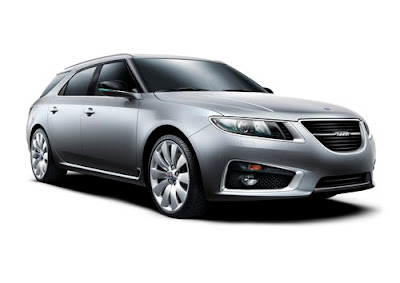
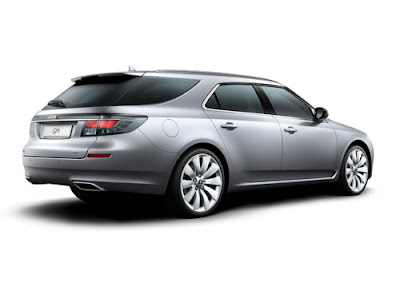
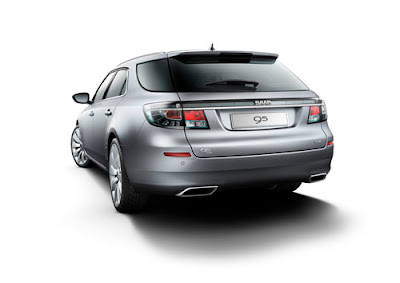
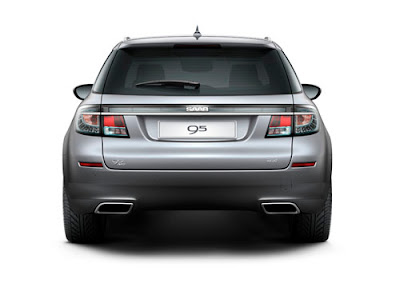
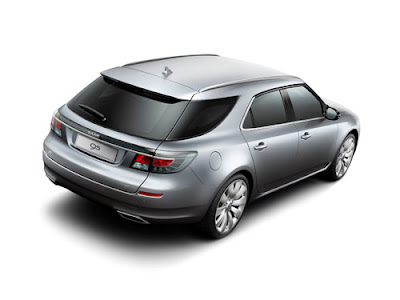








No comments:
Post a Comment